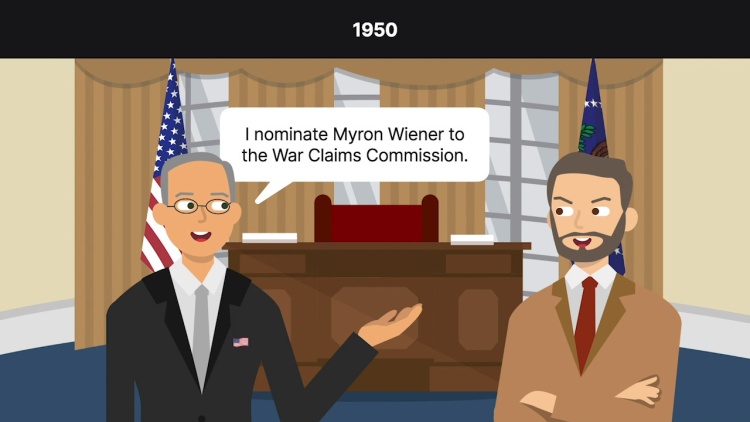Wiener v. United States
United States Supreme Court
357 U.S. 349 (1957)
- Written by Kathryn Lohmeyer, JD
Facts
In the War Claims Act of 1948 (Act), Congress created the War Claims Commission (Commission) to resolve compensation claims for losses incurred by American prisoners of war and internees during World War II. Two of the three members of the Commission were to be appointed by the president of the United States with the Senate’s advice and consent, and those members were to serve for the duration of the Commission’s existence. In 1950, President Harry Truman nominated Myron Wiener (plaintiff) to the Commission. Following confirmation by the Senate, Wiener was appointed to the Commission. When President Dwight Eisenhower took office, Weiner refused to resign. President Eisenhower removed Weiner from the Commission on the ground that staffing the Commission with his own appointees was in the national interest. Weiner filed suit against the federal government (defendant) in the United States Court of Claims, seeking back pay for his salary. The court of claims dismissed the case. The United States Supreme Court granted certiorari to decide whether Congress had intended to limit presidential removal power over members of the Commission.
Rule of Law
Issue
Holding and Reasoning (Frankfurter, J.)
What to do next…
Here's why 899,000 law students have relied on our case briefs:
- Written by law professors and practitioners, not other law students. 47,000 briefs, keyed to 994 casebooks. Top-notch customer support.
- The right amount of information, includes the facts, issues, rule of law, holding and reasoning, and any concurrences and dissents.
- Access in your classes, works on your mobile and tablet. Massive library of related video lessons and high quality multiple-choice questions.
- Easy to use, uniform format for every case brief. Written in plain English, not in legalese. Our briefs summarize and simplify; they don’t just repeat the court’s language.





